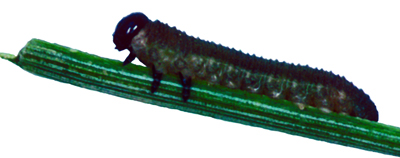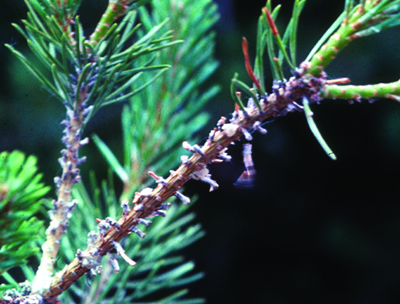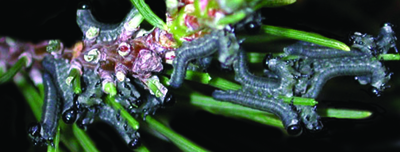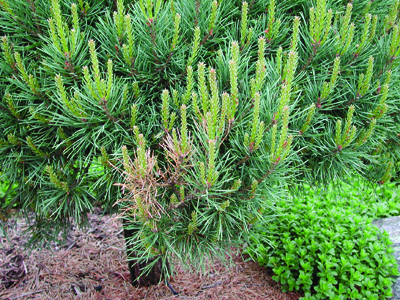European pine sawfly
July 30, 2015
Neodiprion sertifer
Hosts
Scotch, mugo, red, Japanese red, jack and Swiss mountain pines and occasionally others.

Sawflies have 6 or more pairs of prolegs, fleshy outpouchings of abdominal tissue that resemble legs. Caterpillars have 5 or fewer pairs of prolegs.
Eggs of the European pine sawfly are laid in slits on current year’s needles in late summer and fall. Larvae emerge the following spring to feed on two-year old needles. Look for young larvae as Amelanchier is blooming or redbud begins bloom in late April to mid-May.

Pine needle, where European pine sawfly eggs were laid the previous summer. The egg on the right is about to hatch.

Late feeding damage.
Management
Larvae feed in groups; both larvae and their damage can be pruned out. Insecticides should be targeted to younger larvae. Remember, B.t. is not effective on sawfly larvae even though they resemble caterpillars.

Sawfly larvae, which resemble caterpillars, feed in a group, eating all the second-year needles before moving on to new branches.

Early feeding damage on mugo pine.
Print a PDF of this page: European Pine Sawfly



 Print
Print Email
Email



